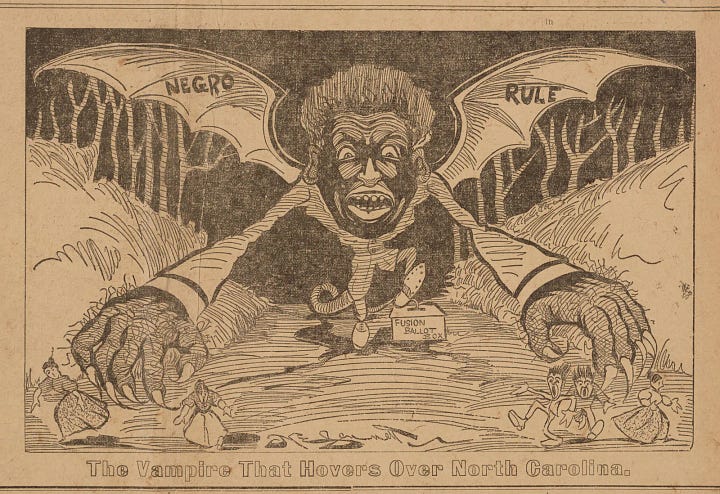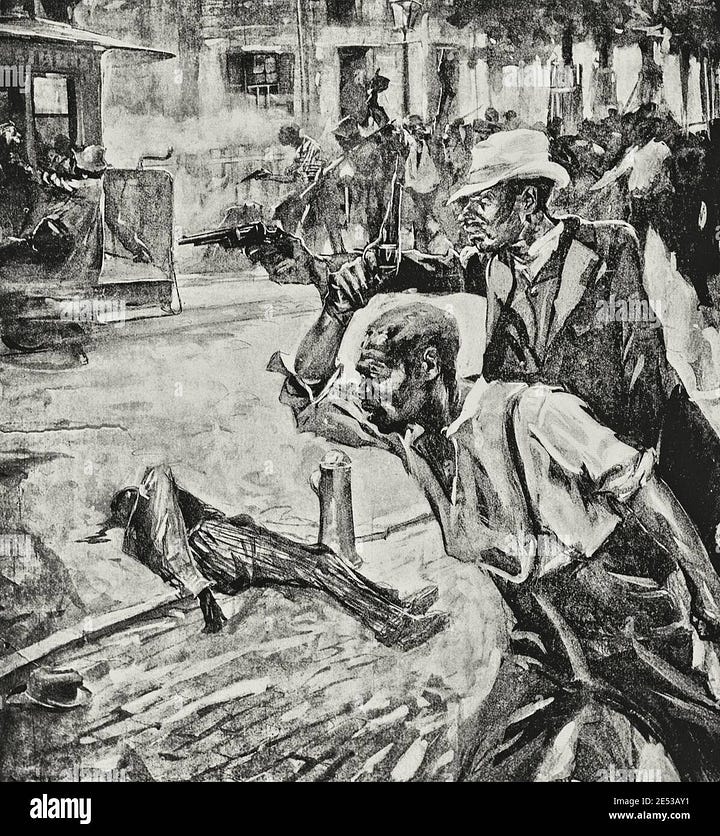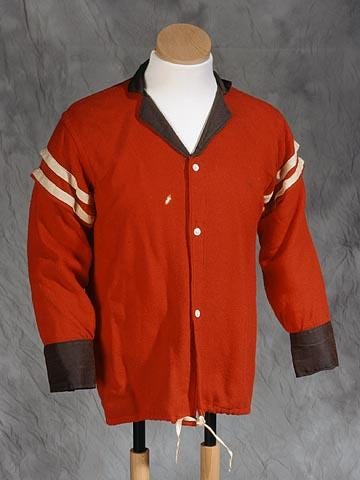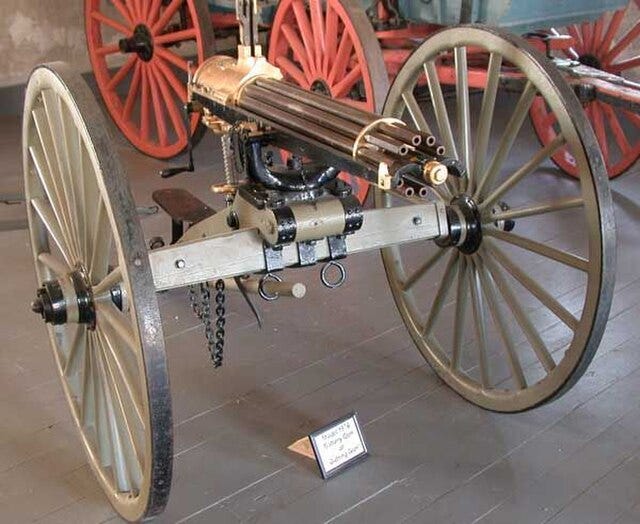For a ‘bonus post’ this week, here’s a story parallel to Virginia’s descent into the long, racist night. This is the 1898 Democratic campaign in North Carolina with it’s culmination in the Wilmington coup. These stories of how one-party rule took over the South in the 1890s can be demoralizing, but I don’t think they’re hopeless. They show that history is made, it doesn’t just happen, which means there are always multiple futures open to us.
In North Carolina as in the rest of the South many years passed between the end of Reconstruction and the imposition of segregation and one-party rule and in every state it wasn’t violent hate groups but button-down mainstream politicians who imposed it. In Virginia Reconstruction ended in 1871 and segregation began with the Constitution of 1902. In North Carolina Reconstruction ended in 1876 and segregation began in 1898.
But let’s start two years before.
Challenge of the Fusion Party
To Furnifold Simmons in 1896, the new Chairman of the Democratic Party of North Carolina, things looked bleak. His patrons, The Secret Nine, agreed. When Simmons was in his early twenties he watched Reconstruction end and federal troops withdraw, and he watched the Democrats run as the rebels against the status quo, against the occupation, against corruption which they equated with Yankees, blacks, and the Republican Party. They managed to win control of the legislature for the first time since the Civil War, and quickly pushed through the favored policies of the state’s railroads, banks, and corporate interests who funded their campaign. (Democrat leaders were often the major stockholders of the railroads, banks, and corporations.)
The Democrats also passed legislation to give the state government the power to nullify local governments (now that the state government was in their hands), and they banned interracial marriage and integrated schools. At this time there were more white voters than black voters, especially in the western part of the state—which was almost entirely white—but blacks had been voting since 1867 and formed a major part of the electorate in the east. Almost all blacks voted Republican (Back then still the party of Lincoln and Emancipation).
In the east were also poor white cotton farmers who were hurt by the Dems' pro-railroads and bank policies. Rich people wanted high interest rates (since they had stock in the banks), high railroad rates (since they had stock in the railroads), and they wanted their stock taxed at a lower rate than salaries and wages. Poor people wanted low interest rates, low railroad rates, and stock taxed the same or higher than other income. For the Democrats getting poor whites in the west to vote against blacks was easy since they didn’t know any blacks, but in the east blacks and whites interacted enough (and remember there isn’t yet segregation in housing, restaurants, stores, or trains) that they had personal experience that disputed the scaremongering. Moreover, these poor white farmers were drawn to the rising 'Populist Movement' then expanding from the Midwest.
When in 1892 a depression hit the U.S., populism became, well, popular, and the NC populists and Republicans banded together to form the North Carolina Fusion Party. (White-black joint parties like the Readjuster Party in Virginia were called ‘fusion parties.’) The Fusionists made big gains in 1892 and in the election of 1894 they swept every statewide office and took majority control of the legislature.
Wilmington was on the east coast. It was the largest city in the state, and the city with the largest black population. It was a Republican stronghold and therefore a Fusion Party stronghold. There had been a sizeable free black population even before the Civil War, and by the 1890s this included a rising black middle class. Blacks were elected to many government positions. Several aldermen were black, one of the five Audit and Finance Board members was black, and blacks served the city as police, clerks, mail carriers, and justices of the peace. Also the Wilmington Daily Record was one of the few black newspapers in the state. The black community in Wilmington was not segregated like Tulsa, Oklahoma’s 'Black Wall Street' a generation later. Wilmington was an integrated city with blacks holding about 1/3 of public offices. That’s why the Democrats had passed that law to give the state government the ability to nullify local governments, not to keep blacks from voting or serving in office—not yet—but because blacks could work with poor whites to pass polices the Democratic leaders didn’t want.
So a group of nine white Wilmington business leaders formed a cabal: 'The Secret Nine'. They certainly seem to have hated seeing black people in power, but their deeper grievance was that black power meant Fusion policies: railroad regulation, low interest rates, proportional tax rates, and stocks taxed as property. Cities had the power to do all these things. The Secret Nine didn’t have the votes to change these things, and were cut out of the patronage loops of city hall.
Then the Fusion party won everything again in 1896.
So the Secret Nine looked to the state Democratic Party to help them retake their city, and the state Democratic Party looked to the Secret Nine to help them retake the state, and that’s when Furnifold Simmons was put in charge.
As Simmons and his fellow conspirators saw things, the Fusion Party had been in control for 6 years, which wasn't so long, but where was its weakness? The Democrats had come to power in the 1870s on the backlash against military occupation, but that was a generation ago. Their actual policies—high railroad profits, high interest rates, and low taxes for the rich—weren't popular (and never had been). And the Democratic Party leaders couldn't change their policies since favoring the rich was, from their perspective, the whole point of leading the Democratic Party. The Fusion combination of blacks and poor whites had a solid-enough majority that it looked invincible for the foreseeable future.
Naturally Simmons thought of race-baiting. The Democrats used race-baiting in the 1870s and had never stopped, but as blacks and whites in the east worked together race-baiting was going to get harder and harder. Southern racism is often portrayed as a deep-seated hatred exploding almost mindlessly into policy ideas, but the architects of segregation left lots of accounts of what they were doing and why they were doing it—from speeches to letters to congressional testimony—and all these accounts agree: segregation was a deliberate attempt to exert control over a state. That is what Simmons was doing in North Carolina. He had an idea for a new type of racism that wouldn’t need to look for grievances, but would invent grievances. The Democrats would promote an entire ideology of grievance that would pair the resentments of whites out of power in eastern parts of the state with the fears of whites losing power in the western parts of the state, and dress it up in a glorious, celebratory public violence.
The Democratic Party's campaign slogan would be “White Supremacy.” And they would attack the Fusion Party at its strongest point, making Wilmington the symbol of everything bad about the state.
All paid for by the Secret Nine.
As Democratic party leader Daniel Schenck bragged, “It will be the meanest, vilest, dirtiest campaign since 1876.”
Write, Speak, and Ride
To build his campaign Simmons recruited those who could, as he put it, 'Write, Speak, and Ride.'
Writers would contribute to a network of racist newspapers inventing and disseminating images of black violence, anarchy, and insult.
Speakers would be racist orators who would provide passionate justifications for 'White Supremacy' with appeals to history, science, culture, and God.
Riders would organize and carry out acts of terror and violence to reduce voting, silence opponents, stir up excitement, and ignite scandals that the writers and speakers would blame on Fusion rule and the inherent nature of blackness.
Again, this was all explicitly planned and the writers, speakers, and riders were explicitly recruited. As muscle to support the riders Simmons restarted the Red Shirts, paramilitary clubs first organized by the Democrats in the 1870s after the Federal government suppressed secret terrorist groups like the Ku Klux Klan. These Red Shirts were to be groups of young men who would gather and march and proclaim their pride in 'White Civilization' (Something like the Proud Boys of our own time but more popular). Meanwhile for the higher classes Secret Nine protege George Rountree organized White Supremacy Clubs. White middle-class business owners across the state were pressured to join or be cut off from loans, wholesale goods, railroad access, and social ties controlled by their richer (Democratic) white neighbors.
The Campaign
The campaign began in late October with a 'White Supremacy Convention' in Goldsboro. For the headline speaker Simmons had recruited an out-of-work politician named Alfred Waddell. Waddell was a Wilmington man ashamed that his failing law practice required him to live off his wife's piano-lesson income, and happy to earn his new paychecks from the Secret Nine. In the keynote speech Waddell swore they would exile blacks and their white supporters from the state altogether. The revved-up Red Shirts rushed out of the convention to rampage through black neighborhoods firing guns and whipping passers-by.
Red Shirt marches followed in towns and cities all over the state. In Wilmington Simmons hired an out-of-work fireman named Mike Dowling to lead the local Red Shirt efforts. On November 1st he led a march of 1000 Red Shirts and allies through Wilmington's black neighborhoods. The next day he led a 'White Man's Rally' that culminated in shooting into black homes for fun. After this Red Shirt events were a daily occurrence. The Democrats formed White Citizen Patrols to disrupt black churches and community meetings. The Secret Nine even purchased the Wilmington Red Shirts a brand-new Gatling Gun.


At the time law enforcement consisted of city and county sheriffs, usually elected, and their handfuls of deputies. Many were Fusionists opposed to all of this, but so much orchestrated chaos was far beyond the capacity of local law enforcement to stop.
The most effective White Supremacist in the state was probably Josephus Daniels, publisher and editor of Raleigh's News and Observer. He proclaimed his paper to be 'The militant voice of White Supremacy' and was it ever. Democratic papers either didn't publish any account of Red Shirt violence or they portrayed the Red Shirts as brave defenders against villainous black and Fusionist threats that sheriffs were too corrupt (if they were Fusionist) or too overwhelmed (if they were Democrats) to stop. Daniels' particular specialty, however, was concocted stories of white women alone in public who barely escaped assault by nefarious blacks. (He laughingly admitted later these were fabrications.) Often these stories were set in Wilmington where blacks were allegedly incited by 'black control' of the government, which according to the News and Observer would be coming soon to the entire state if the Fusionists weren't voted out of office. Stories fabricated by the News and Observer would be reprinted by other Democratic newspapers across the state citing the News and Observer as the source.
White suffragist Rebecca Felton was a favorite of Democratic media. (The women's suffrage movement grew from the abolitionist movement originally, but later had a much more complicated relationship with black civil rights. In the South suffragists were often avowed white supremacists.) From her native George she called for an increase in lynching (Actual quote: 'I say lynch, a thousand times a week if necessary!'), and claimed that the biggest issue for white farmers was not railroad fees or interest rates but their wives being raped by black men. Her speeches and essays were reprinted often throughout the 1898 campaign in the Democratic papers.
The daily violence in Wilmington by the Red Shirts led many blacks to look for weapons for their own protection, but the only local gun dealers were white and wouldn't cross the White Supremacy Clubs to sell guns to blacks. Blacks appealed directly to gun manufacturers, but they wouldn't sell except through their local agents. Meanwhile the Democratic newspapers, when they got wind of these efforts at self-defense, breathlessly reported a conspiracy by the blacks to buy guns in order to kill all the whites and seize the government. Why black people would need to seize the government when, according to those same newspapers, they already controlled it was never explained. (The Democratic Party relied on these invented conspiracies because their hired private detectives failed to turn up real black conspiracies.)
The Vote
Voting came November 8th. Governor Daniel Russell (sitting governor elected on the Fusionist ticket) tried to come to Wilmington himself to encourage turnout but the Red Shirts blocked his train and threatened to lynch him. After so many months of unchecked threats and intimidation not surprisingly turnout at the polls was low. Most voters simply stayed home assuming that by the next election—or at least the one after that—the White Supremacists would lose their ardor and decide the violence wasn't worth it.
But leaving nothing to chance the Democrats, according to later testimony by Red Shirt leader Mike Dowling, had trained Red Shirts to switch Fusion votes for Democratic votes while working the polls.
Needless to say the Democrats won the election.
The Fusionists assumed it as just a single election. The pendulum would swing again, things had been bad in the 1970s and gotten better, why not now? Plus since not all offices had been up for election and even those that were did not immediately change hands, the Fusion Party still governed Wilmington.
But the Democrats weren't planning merely one fraudulent election. The Secret Nine had ordered Alfred Waddell's new Committee of Twenty-Five to strip black citizens of voting rights altogether. So the day after the election Waddell addressed a group of five hundred whites at the courthouse in Wilmington. He read a new “White Declaration of Independence” and declared that the black residents of Wilmington would be given 12 hours to comply with its confusing, belligerent, and lawless demands. Next the Committee of Twenty-Five summoned a group of 32 prominent black citizens, and handed them the declaration and insisted they respond immediately. The group quickly sent a response as demanded.


No matter. The next morning Waddell claimed he had received no response, gathered five hundred whites at the armory with rifles, unveiled that Gatling gun, and set to work. First they burned down the black newspaper building (The publishers on a tip had slipped out of the city the night before). Then they terrorized black neighborhoods, burning homes and businesses, and assaulting and murdering people. At least 60 black citizens were killed, perhaps as many as 300. Hundreds more fled to hide in the swamps.
Meanwhile Waddell marched to city hall where at gunpoint he forced the mayor, board of aldermen, and police chief to resign. That afternoon a new government with Waddell as mayor declared themselves the rulers of the city. The next morning with a list provided by the Secret Nine, Waddell and his mob army rounded up the few black leaders who were not already dead or in flight, and marched them to the train where they were escorted out of the state by armed guards. Then he rounded up whites who had led or publicly supported the Fusionists and paraded them around the city for public abuse and humiliation.
Grandfather Clauses
The 1898 Democratic campaign was a coup d'etat against the elected government of Wilmington, but more than that it was a revolution against the state of North Carolina itself. The Democrats wanted much more than an edge in future elections or higher railroad profits. When the new Democratic majority took power in the state legislature they moved quickly to make North Carolina a one-party state by simply banning black citizens from voting. But how to do that without running afoul of the U.S. Constitution?
White Supremacy Club originator George Rountree was tasked with creating the new program. Based on the 1890 Mississippi constitution (imposed on that state through an even more openly violent campaign) he proposed a 'literacy test'. Each citizen must prove literacy by reading and writing a section of the Constitution to the satisfaction of a (Democratic-Party-appointed) clerk. There was no appeal, so the clerk could simply fail enough black voters to keep any future Fusionist candidate from being able to win. However, to keep this from disenfranchising whites in the western part of the state who were often too illiterate for a clerk to pretend otherwise Rountree included another Mississippi invention, the 'Grandfather Clause.' A citizen could skip the literacy requirement if they had an ancestor who was eligible to vote before 1867, the year when North Carolina gave blacks the vote.
Beyond this, and in some respects even worse than this, the Democrats passed a new, totalitarian set of segregation laws. It's difficult for modern readers to grasp how totalitarian segregation really was and how little it arose out of customs or natural impulses. Segregation was as oppressive as anything Stalin devised. The new law forbade blacks and whites from riding trains together, sitting together in public spaces, or even sharing the same bible. Eventually even housing was segregated. This new regime regulated all public behavior in order to make it impossible for blacks and whites to interact publicly as equals anywhere, anyhow, anytime in the state. They couldn't meet, form partnerships, or even have open conversations. In the future whites would have no personal experiences with which to question racist propaganda.
All of this was so the Democratic establishment could hold power forever.
Race Riots and Winner Take All
Some of the architects of the 1898 campaign were highly attuned to the media. Wilmington coup-leader Alfred Waddell, like many truly awful people, had a flair for public relations. Within weeks of leading a violent overthrow of an elected government he convinced Collier's Weekly, a respected national magazine, to publish his personal account of it, called, “The Story of The Wilmington, North Carolina, Race Riots,” which introduced the term 'Race Riot' to the English language. In it Waddell portrayed himself as a reluctant hero drawn into the city's struggles by the desperate need to protect the innocent whites from rampaging subhuman black villainy. It cemented a national view of Southern violence that has lingered to this day, a tragic flaring up of deep, mutual tensions beyond the power of any individual to control. Of course, ironically 'race riot' wasn’t so inaccurate if one remembers which race actually rioted.
Literacy tests with grandfather clauses and the new totalitarian segregation laws would spread beyond the state (The Virginia Constitution of 1902 borrowed some of these ideas.) until one-party rule descended on the entire South for more than half a century. The Democratic party would choose its officers and candidates through caucuses that only white, local party leaders could attend and those slates would run unopposed in sham general elections. Like elections in the Soviet Union the voter could vote yes or not vote at all.
What happened to the leaders of the 1898 Democratic White Supremacist Coup?
Furnifold Simmons, the original mastermind of it all, served as U.S. Senator from North Carolina for over thirty years. He never paid any price in law or reputation.
Alfred Waddell, armed insurrectionist, murderer, orator, and featured Collier's correspondent occupied the office of Wilmington's mayor till 1905 and died peacefully in 1912. He never paid any price in law or reputation.
George Rountree, author of North Carolina's voter suppression and racial segregation laws and founder of the White Supremacy Clubs, went on to co-found the North Carolina Bar Association. He never paid any price in law or reputation.
Josephus Daniels, virulent racist newspaper owner and propagandist, was later appointed President Woodrow Wilson's Secretary of the Navy and FDR's Ambassador to Mexico. In life he never paid any price in law or reputation, but there was a statue to celebrate him erected in 1985 in Raleigh's Nash Square that was recently taken down.
Tuesday we’ll return to the Welcome to Charlottesville series in which I share the story of my Fourth Time moving to Charlottesville. Thanks for reading and please subscribe and share!
Comments are welcome but please no profanity, trolling, or personal insults!




